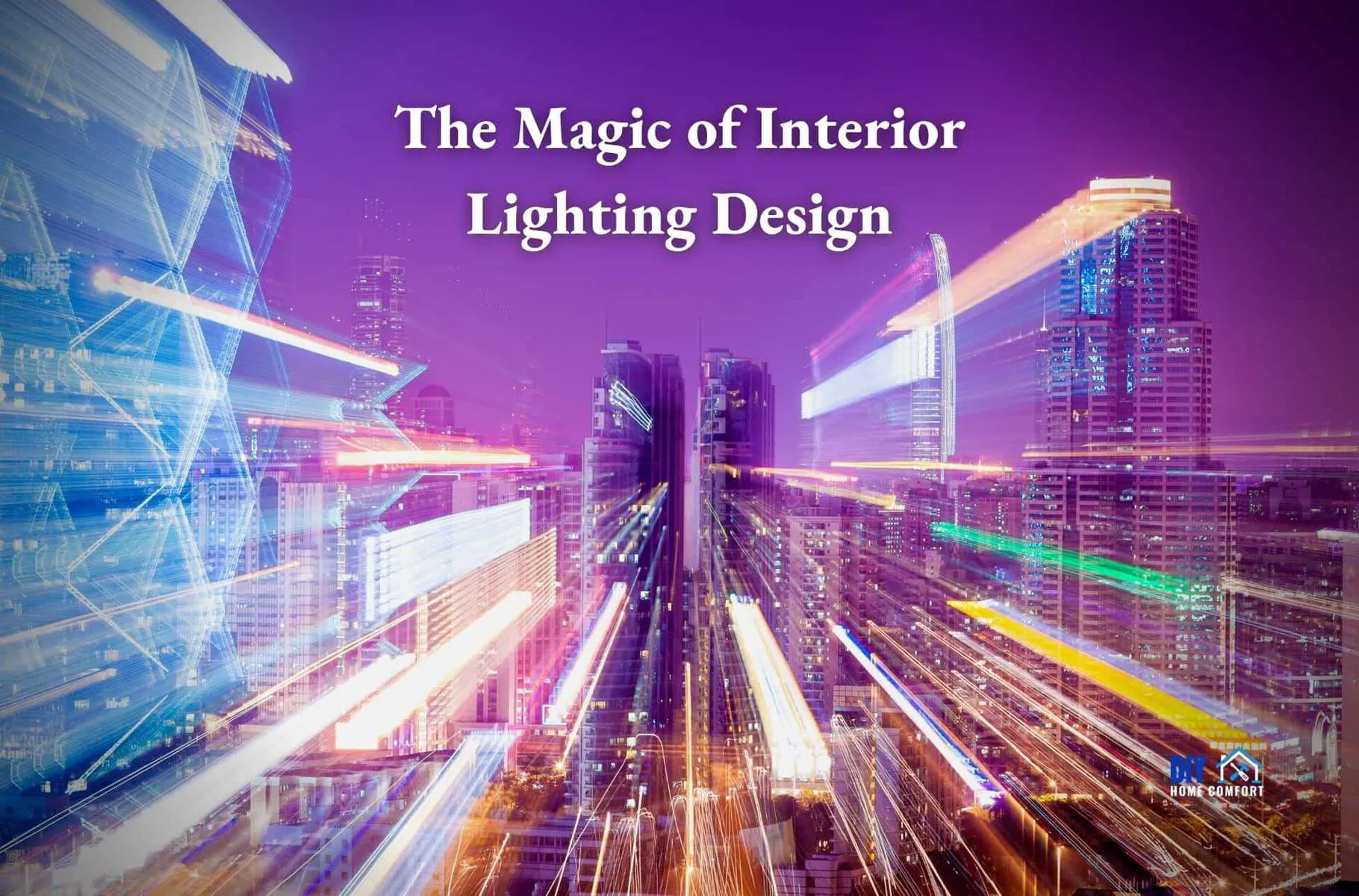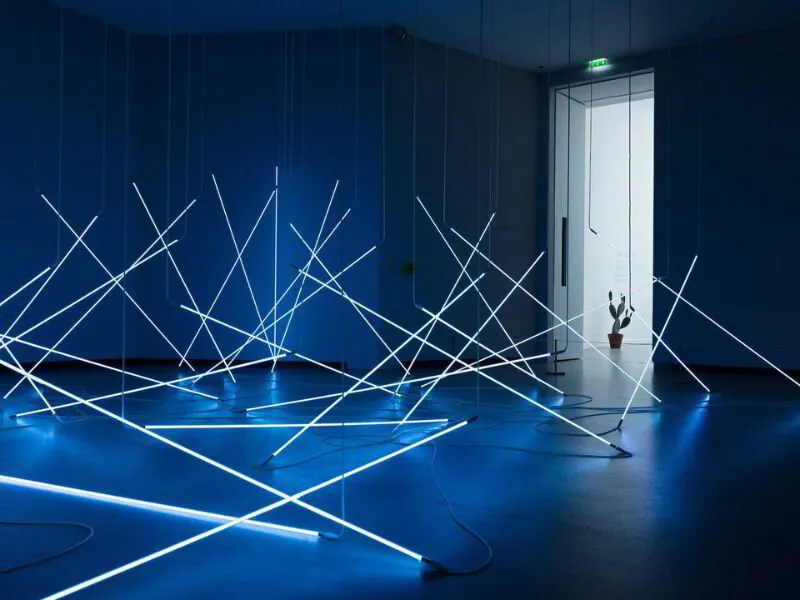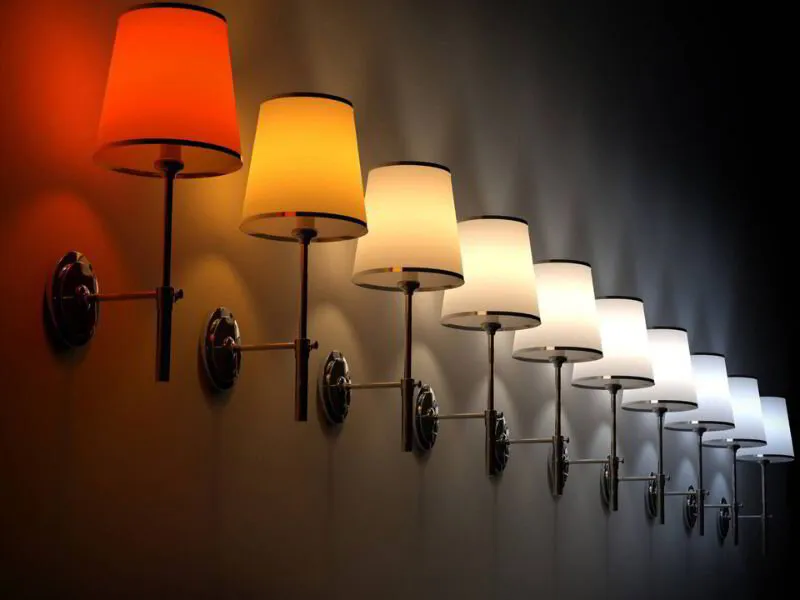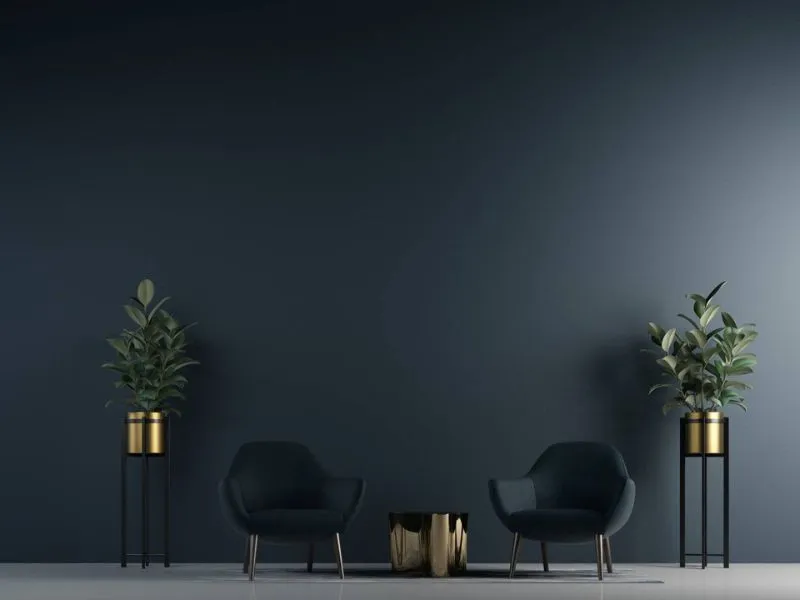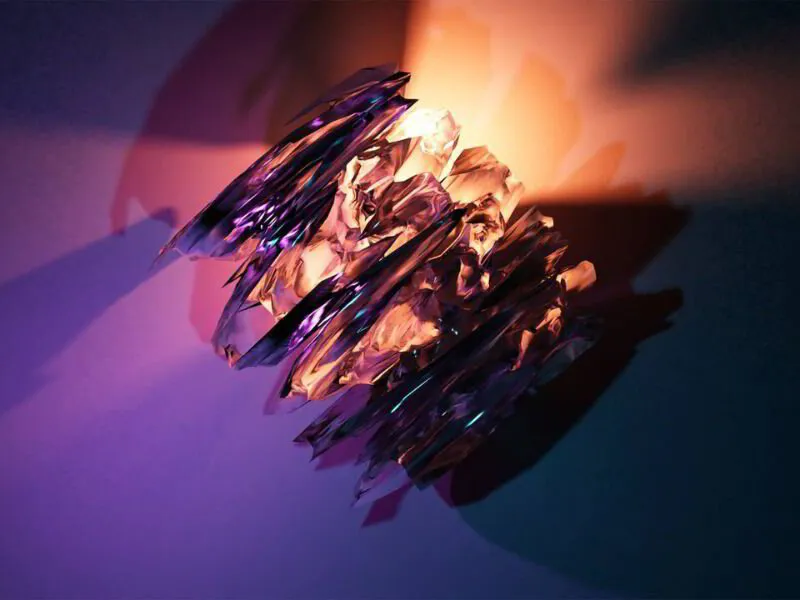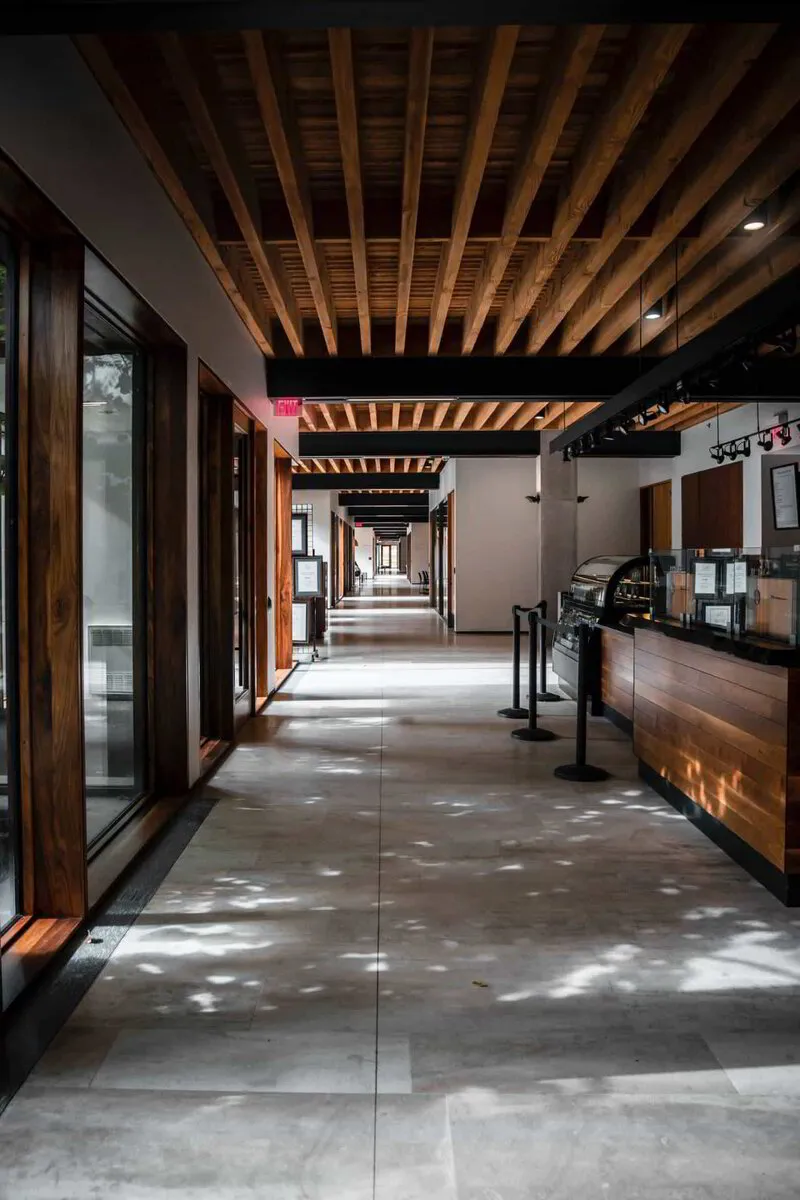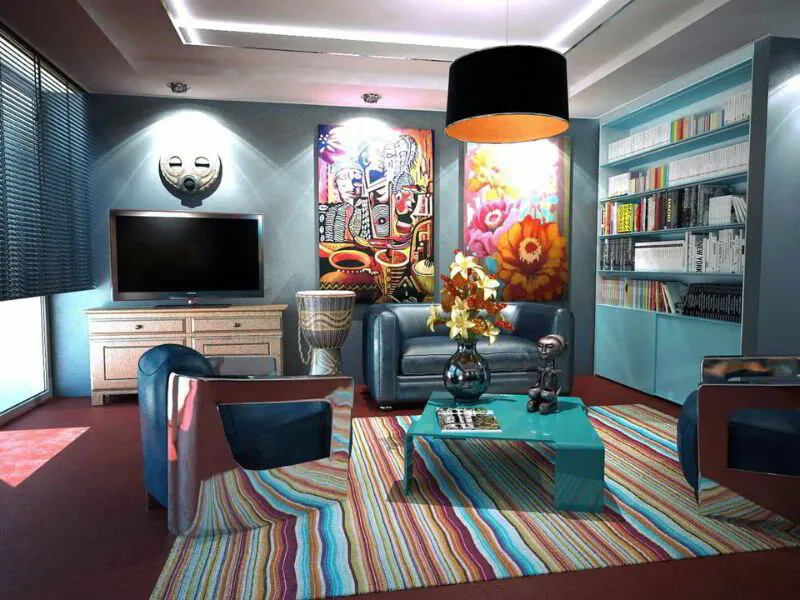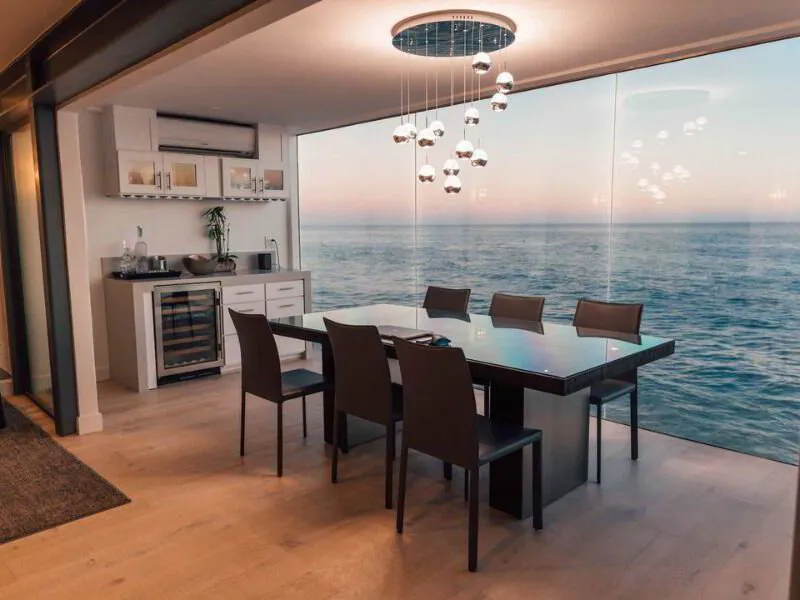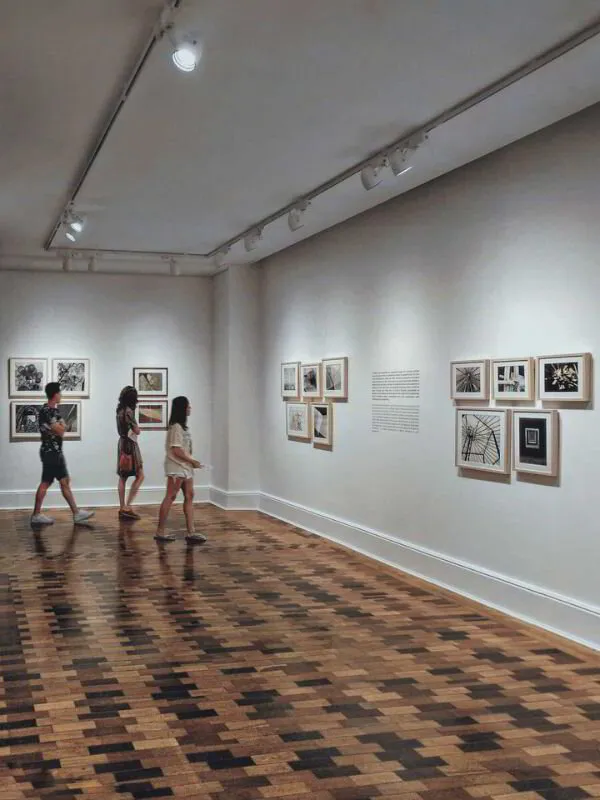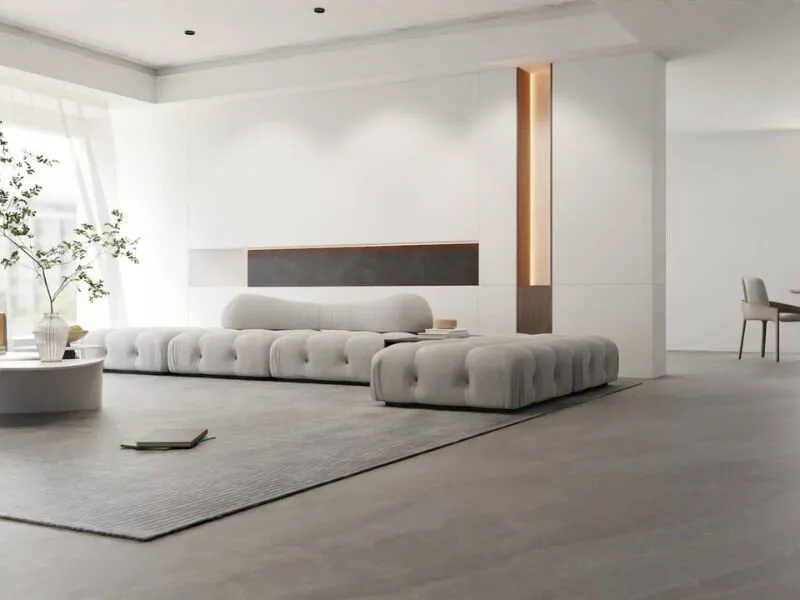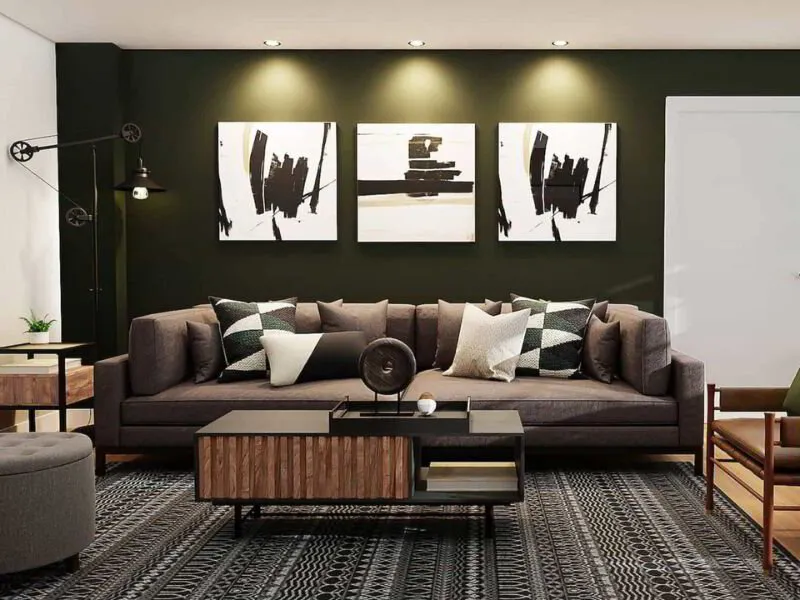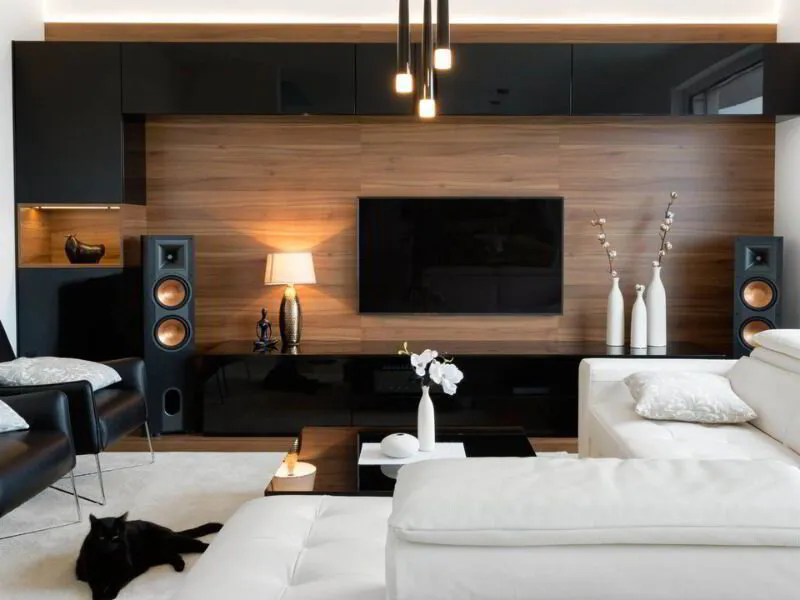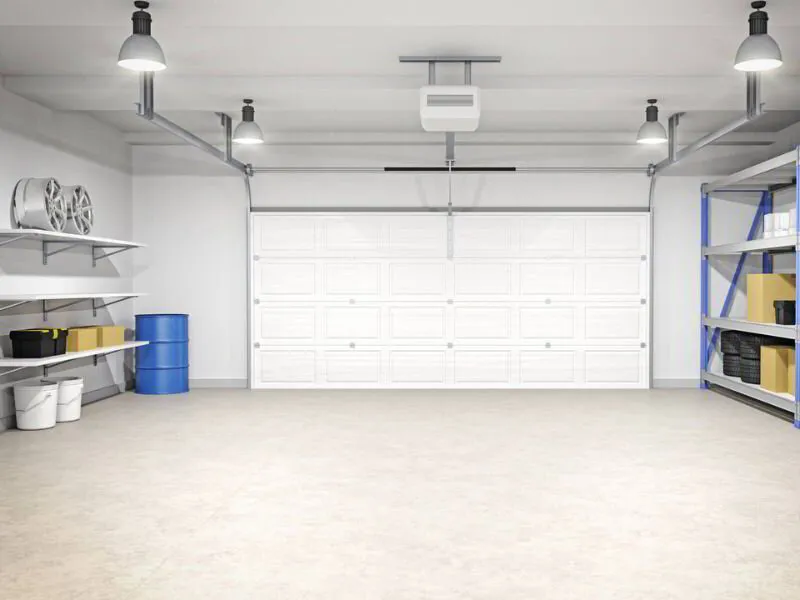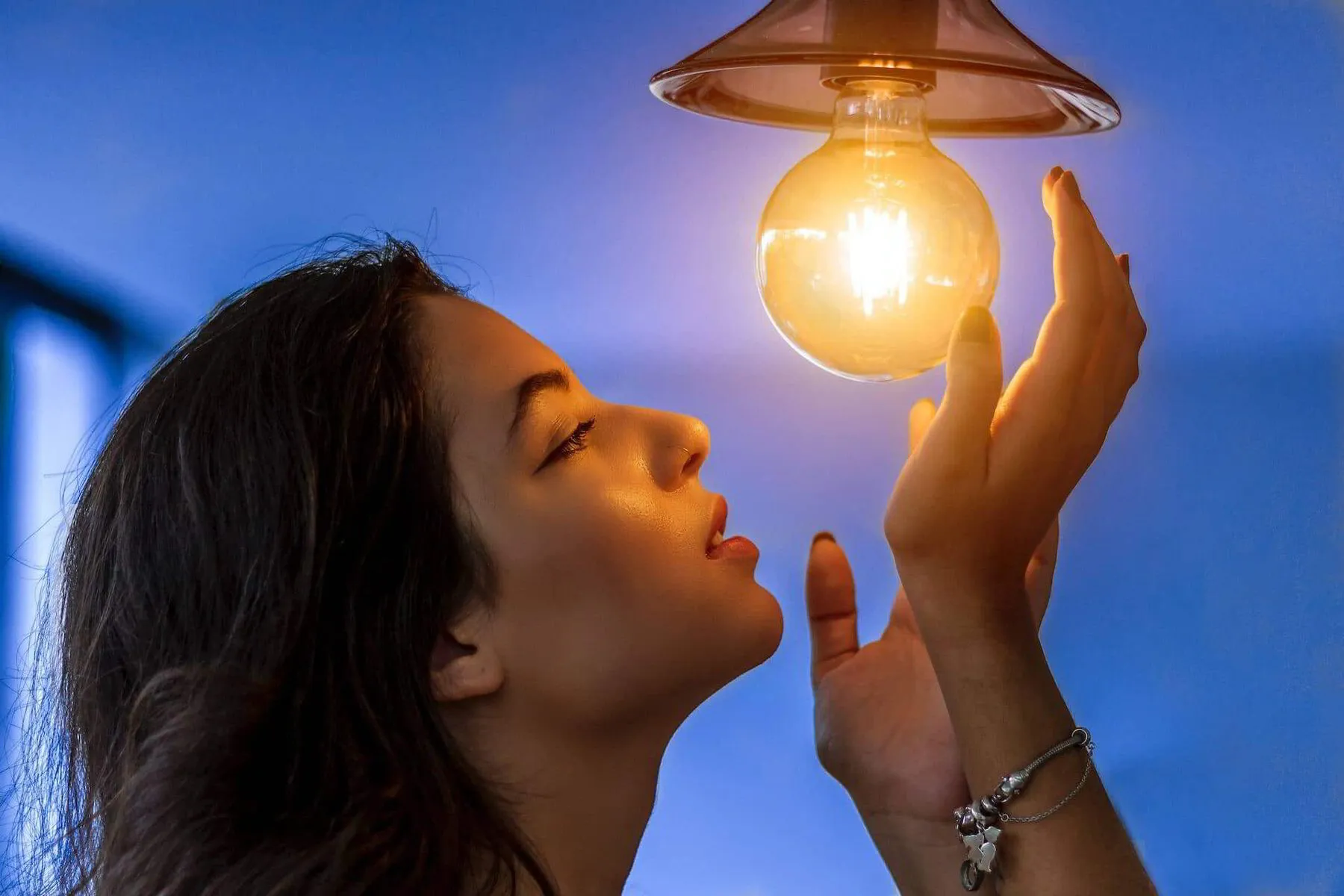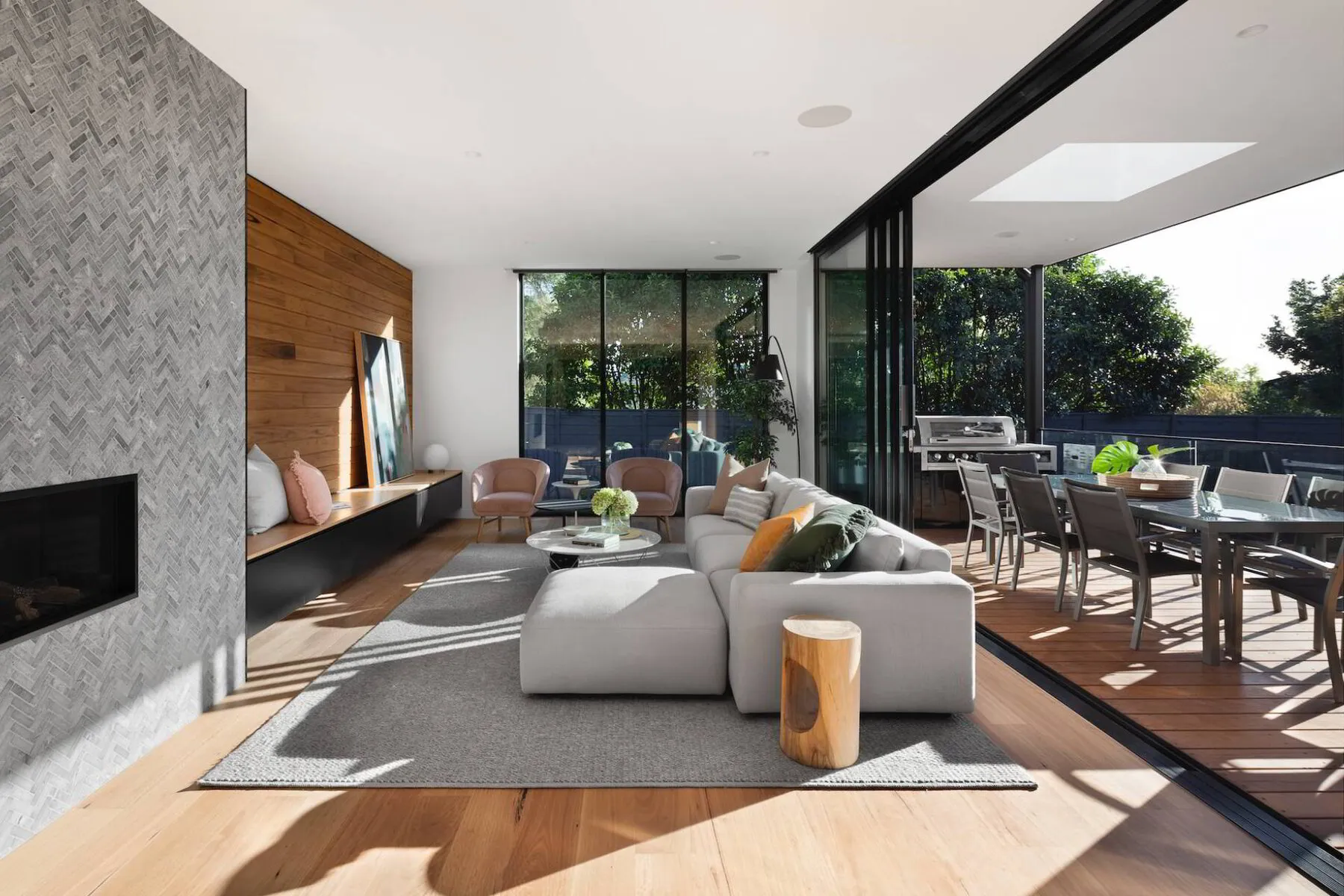The Magic of Interior Lighting Design
Interior lighting design is integral to transforming a space from mundane to magical.
From floor lamps to natural sunlight, the possibilities for creating a unique ambiance are endless for every budding interior designer.
With the right fixtures, placement, and colors, you can create an inviting atmosphere that welcomes guests and transforms any room into the perfect oasis.
Read on to learn more about how interior lighting design can be used to help bring your home décor vision to life.
📘 Key Takeaways
- Importance of Lighting: Thoughtful interior lighting design can transform rooms by setting the mood, showcasing architectural features, and highlighting artwork.
- Psychological and Physiological Impact: Proper lighting plays a crucial role in regulating hormones, improving sleep cycles, enhancing alertness, reducing stress, and boosting mood.
- Color and Temperature: The choice between warm or cool lighting can dramatically alter a room's ambiance from cozy to invigorating.
- Saturation and Brightness: Considering these factors when selecting lights can significantly influence the comfort and atmosphere of your space.
- Types of Lighting: Understanding the five main types – ambient, task, accent, mood, and combustion lighting – can help create a well-lit and aesthetically pleasing environment.
Why Is Lighting Important In Interior Design?
Interior lighting design is important because it helps you create comfortable and aesthetically pleasing rooms.
Good lighting systems can help to set the mood, emphasize architectural features, and highlight artwork and other decorative elements.
It also affects how well people can see inside the room and how easy it is to navigate around.
Ultimately, proper interior lighting design can hugely impact how enjoyable a space is for its occupants.
The Psychological and Physiological Effects of Light
Light has many significant effects on the human body, both physically and psychologically.
Physiologically, it can influence melatonin production and help regulate hormones, aiding in the promotion of healthy sleep cycles.
Light can also increase alertness and improve reaction time, resulting in enhanced visual acuity.
On a psychological level, light can reduce stress, improve your mood and even alleviate some symptoms associated with depression.
Used strategically in the home or other indoor spaces, light can create an inviting atmosphere while providing multiple benefits to its occupants.
Light Color and Temperature
The color and temperature of light can play a significant role in your interior design.
The type of light you choose can make all the difference in how the space looks and feels.
There are two main categories regarding light color – warm and cool.
Warmer tones such as yellow, orange, and red create a cozy atmosphere, while cooler shades like blue, purple, or white can make a room feel energized and inviting.
The temperature of light (measured in degrees Kelvin on the color temperature scale) is also important for setting the tone of your space.
Warmer tones generally have lower Kelvin values, whereas cooler ones have higher values.
When used strategically, these various colors and temperatures will bring out the best in any interior lighting design scheme.
Saturation and Brightness
Apart from color and temperature, saturation and brightness are two other important factors to consider when selecting lighting for your interior design.
The saturation of light refers to how vivid or intense its color is, while the brightness of light indicates how powerful it is.
A high degree of saturation combined with a low brightness level can create a dim atmosphere perfect for relaxing.
In contrast, a low saturation with a high brightness will add energy and excitement to any space.
It’s important to consider both of these parameters when selecting lights, as it can affect how comfortable people feel in the room.
Lighting Direction
It’s not just the color, temperature, saturation, and brightness of lighting that you need to consider when designing an interior space – the direction of the light is also important.
Direct lighting like spotlights or track lights, can be used to highlight specific areas, while indirect lighting, like wall sconces or table lamps, will give a more diffuse effect.
Ambient lighting such as cove or recessed fixtures, works well for filling a room with a soft glow.
The right combination of these different types of lighting can create an atmosphere that is welcoming and comfortable.
The 5 Types of Lighting in Interior Design
The type of lighting is an important factor in creating a comfortable, inviting living space and an essential fundamental in interior design.
There are five main types of lighting to choose from:
General and Ambient Lighting
Ambient lighting - often referred to as general lighting - comprises a range of sources such as natural light, LED track lights, downlights, and LEDs which provide large amounts of light for general tasking.
Ceiling lighting design with LEDs is another popular option here, providing a uniform spread of light in a room efficiently.
Ambient lighting ensures that everyday tasks can be undertaken without glare or shadows.
Task Lighting
Task lighting is designed to help you perform specific activities, like reading or cooking.
It should be even and glare-free, so the user can comfortably view whatever they are working on.
There are several types of task lighting, such as desk lamps, wall lights, and pendant lights.
Consider the frequency and duration of tasks when choosing the perfect type of light for your needs.
To ensure maximum efficiency and comfort during use, make sure it provides enough brightness and proper color temperature for the job at hand.
Accent Lighting
Accent lighting is designed to focus on certain features of a space, like artwork or furniture.
It can create dramatic shadows and highlight specific elements in the room.
Common types of accent lighting include recessed lights, pendant lights, and spotlights.
Color temperature should be kept low to emphasize the accentuated piece without too much brightness.
When choosing the perfect accent light, consider both the orientation and distance from the feature it will be highlighting for maximum effect.
Mood Lighting
Mood lighting is designed to create a certain atmosphere in a space.
It should be captivating and emotionally evocative, so select colors wisely.
Dimmable lighting is usually best for this purpose, as they create an inviting ambiance.
Consider adding some texture and depth with colored LED lights or wall washers.
With the right amount of lighting, you can quickly alter the mood by changing the intensity or tone of the light.
Strategically placed accent lights can also make all the difference in creating a unique atmosphere.
Special Mention
Combustion lighting is created through chemical reactions and provides bright and intense light with minimal effort and expense.
Candles, fireplaces, and other viable combustion sources can be used in lighting design projects to add accent or task lighting, general illumination, or unique shadows for interest and drama.
The 6 Types of Lighting Effects
Down Lighting
Downlighting is a type of ambient lighting that is used to illuminate the entire space.
It is typically used in modern, contemporary designs due to its clean, minimalist look.
Common types of downlights include track lights, recessed fixtures, and directional spotlights.
Be sure to choose the right amount of light depending on the size and layout of the room; too little or too much light can make the space feel overwhelming.
Picking the right bulbs for downlighting can make all the difference - LED bulbs are energy efficient and have long lifespans, making them a great choice for this purpose.
Uplighting
Uplighting is a type of ambient lighting that adds a dramatic touch to any room.
It works by casting light onto the ceiling and walls from below, creating an eye-catching effect.
Uplights can accentuate certain features, such as architectural details or artwork; they can also make low ceilings look higher.
When choosing uplights, consider wattage and color temperature to create subtle, warm atmospheres; avoid harsh fluorescent lighting, which can often feel overwhelming.
Wall Washing
Wall washing is a type of ambient lighting used to make a wall look brighter and larger.
This lighting technique typically involves mounting several light fixtures up high, pointing them directly towards the wall.
This way, the light can reflect off the wall and evenly spread across its surface.
Wall washing also looks excellent when combined with downlighting or uplighting; this combination can create a truly stunning effect in any space.
When using wall washing lights, choose directional ones to control their focus and intensity.
Wall Grazing
Wall grazing is a type of accent lighting that creates dramatic shadows and highlights on walls.
It involves using directional lights pointed directly at the wall, grazing it from side to side.
Wall grazing is similar to wall washing, but the light is closer to the wall so it "grazes" the entire wall instead of focusing on one specific point.
Wall grazing works best to highlight architectural details, artwork, or textured walls.
The intensity and angle of the lights can be adjusted to create different levels of depth and contrast.
Remember that wall grazing can create a powerful visual effect and should be used sparingly to avoid over-illuminating a space.
Spotlighting
Spotlighting is a form of accent lighting that is perfect for highlighting specific features of a room.
This technique uses directional spotlights pointing at objects, such as artworks, bookshelves, tables, and plants, to draw attention to them.
Spotlighting can create dramatic and eye-catching effects in any space.
It’s best used in combination with other types of lighting, such as wall washing or uplighting, to balance out the light sources and create a cohesive look.
Adjusting the intensity and angle of the spotlights allows you to control the amount of illumination each object receives.
Perimeter Lighting
Perimeter lighting is a type of accent lighting that creates an inviting ambiance by outlining the perimeter of a room.
This technique involves positioning lights along the edges of a room, typically in the ceiling, to softly illuminate the walls and draw attention to architectural details.
Perimeter lighting is ideal for low-light settings and can be adjusted to create tailored effects.
By combining different types of lighting, such as wall grazing or uplighting, perimeter lighting can help enhance any space.
Best Home Interior Lighting for Each Room
Choosing the best interior lighting for each room is essential for creating an inviting atmosphere in any space.
The type of lighting should be tailored to each room depending on its purpose and layout.
Understanding how to combine the key types of lighting will help you create a harmonious balance and enhance any room with the right illumination.
Furthermore, selecting fixtures that complement the home’s style and provide a comfortable amount of light is important.
Kitchen Lighting
One of the most popular lighting options for a kitchen is under cabinet lighting.
This type of lighting adds function and can create a real wow factor when done right.
Under cabinet lights can be used to brighten countertops, highlight artwork or create task lighting for cooking and food preparation.
They come in various styles and colors, allowing you to customize the look of your kitchen and add an element of style and sophistication.
Bedroom Lighting
The most popular way to light a bedroom is with an overhead fixture, such as a chandelier or pendant light.
This type of lighting creates a warm, inviting atmosphere and can provide the perfect amount of ambient light for reading.
When it comes to bedroom lighting, it is important to make sure your fixture fills and illuminates the room well, but is not too overpowering.
In addition, bedside lamps are great for adding task lighting and creating an intimate ambiance in the bedroom.
Living Room Lighting
For a living room, many people prefer ambient lighting that is soft and inviting.
One of the best ways to achieve this type of lighting is wall lighting or table lamps.
Floor lamps also provide task lighting for specific areas, such as reading nooks or gaming spaces.
Chandeliers are also popular in living rooms as they create a warm atmosphere and can provide atmospheric or task lighting.
Bathroom Lighting
For a bathroom, many people prefer to use recessed lighting.
This type of lighting is excellent for providing even and bright light throughout the room, and it can be used to add task or ambient light in specific areas.
In addition, vanity lights are popular for bathrooms as they provide functional and aesthetically pleasing light.
Dining Area Lighting
For a dining area, pendant lights are often recommended.
These lighting fixtures come in many shapes, sizes, and styles and are an attractive way to provide bright, even light throughout the room.
Chandeliers can also be used in a dining area as they provide an inviting atmosphere with just enough light for dinner guests to enjoy their meal.
In addition, recessed lighting is also popular in dining areas to provide task lighting and additional brightness in the room.
Home Office Lighting
A great way to provide light for a home office is with task lighting.
This could be with desk lamps, floor lamps, or wall sconces that are adjustable and have enough brightness for the user to work comfortably and efficiently.
Additionally, overhead lights should be considered to diffuse any shadows created by task lights.
Where possible, maximizing natural light should also be part of the plan to enjoy the benefits of natural sunlight.
Recessed lighting is also an option, as it can provide more than one source of light in the room.
Staircase Lighting
When lighting a staircase, it is important to consider the safety of those going up and down the stairs.
For this reason, rail-mounted lights should be used along both sides of the stairs, with a light at each step.
Wall-mounted fixtures can also provide helpful illumination if placed strategically on walls that are near or above the staircase.
Additionally, overhead lighting should be considered to ensure visibility is maximized.
Utility Rooms and Garages
When lighting utility rooms and garages, bright white lighting should be used to ensure safe navigation.
Track lighting, recessed fixtures, and pendant fixtures can all help provide illumination that is both utilitarian and aesthetically pleasing.
Additionally, motion sensor lights are great for turning on the lights when someone enters the room or garage space and help to conserve energy.
Finally, overhead lights should also be considered to maximize visibility throughout the space.
Lighting Fixture Types
Surface Lights
Surface-mounted lights are lighting fixtures installed directly onto the ceiling or wall, usually in areas such as hallways, entryways, and bedrooms.
These types of lighting are visible from the floor and can effectively emphasize architectural details or provide a pleasant illumination for any environment.
Pendant Lights
Pendant fixtures are great for adding a decorative touch to any space.
Suspended from the ceiling by a cord, cable, or chain and often found in homes with higher ceilings, they can provide great lighting in dining rooms and kitchens.
Recessed Lights
Recessed lighting is a type of indirect lighting, typically in the form of downlights or potlights, which are installed into the ceiling cavity, hidden away from view.
This type of light source can be used to great effect in any room, but it is important to maintain a balance with other types of lighting, as having too much-recessed light may be unflattering.
Track Lights
Track lighting is a highly flexible way to light up any space, providing customized options for multiple bulbs on one track.
It can be suspended from the ceiling like pendant lights or surface-mounted similar to surface lights and comes in various finishes, colors and styles.
Portable Lights
Portable lights are a convenient way to ensure lighting in any area of the home.
They either plug into an electrical outlet or are battery-powered and often used for desks, bedside tables and other areas.
Achieving a desired look can also be done with floor lamps for added style and variety - the key to successful lighting design lies in combining different fixtures, color temperatures and styles.
Final Thoughts
Interior lighting design is an art form that can bring undeniable magic to your home.
From creating the perfect ambiance and atmosphere to ensuring you have adequate task or security lighting; there are so many ways to elevate your space.
With some creativity and thought, DIY interior designers have the power to transform their homes into beautiful, functional works of art.
Lara Harding
Lara is a supporting author @ DIY Home Comfort. She's an experienced interior designer and decorator and a full-time mom. You can find out more about her here.
